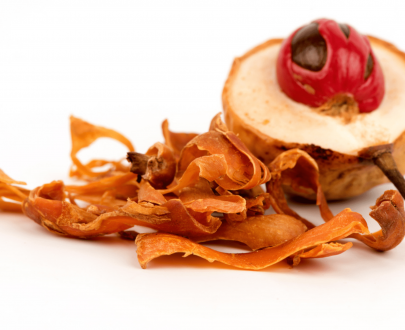- You have no items in your shopping cart
- Subtotal: ₹0
Mace tends to be a yellowish-brown spice that’s obtained from the dried lacy layer of the nutmeg seed. Available in ground form and as dried “blades,” it’s often paired with other aromatic spices. Mace figures eminently in Asian, Caribbean, Indian, and Moroccan cuisines, and is additionally utilized in British, Dutch, and French cooking. it’s generally found in spice mix and food , also as savory dishes like soups, sauces, and poultry and fish recipes. However, the “mace” that’s used as a protective aerosol has no relationship to Pepper.
The nutmeg (Myristica fragrans) may be a tropical evergreen that produces both nutmeg and mace. Mace is the red gauzy layer (called the aril) that contained the nutmeg seed.
Mace is native to Indonesia and also found in some Caribbean islands, especially in Grenada, where nutmeg is that the national symbol and appears on the country’s flag.




